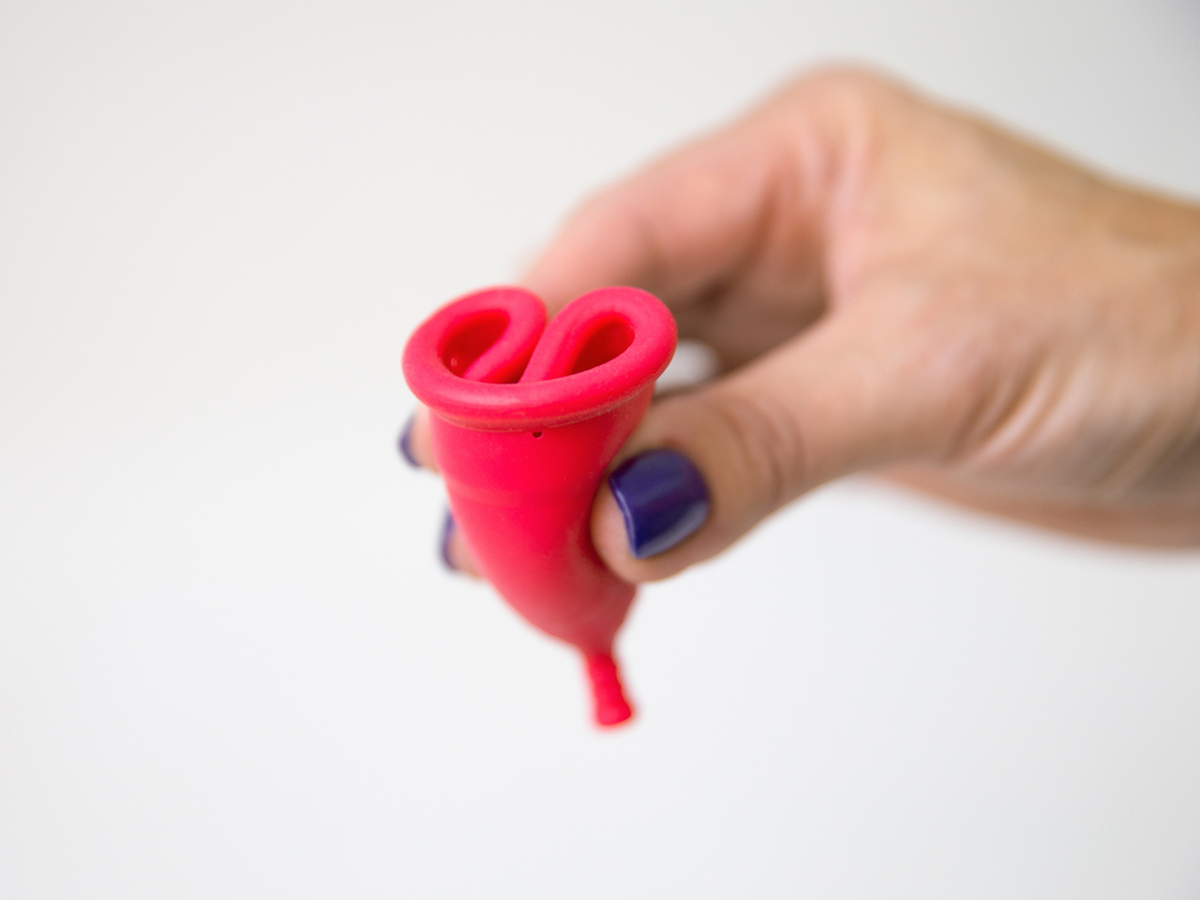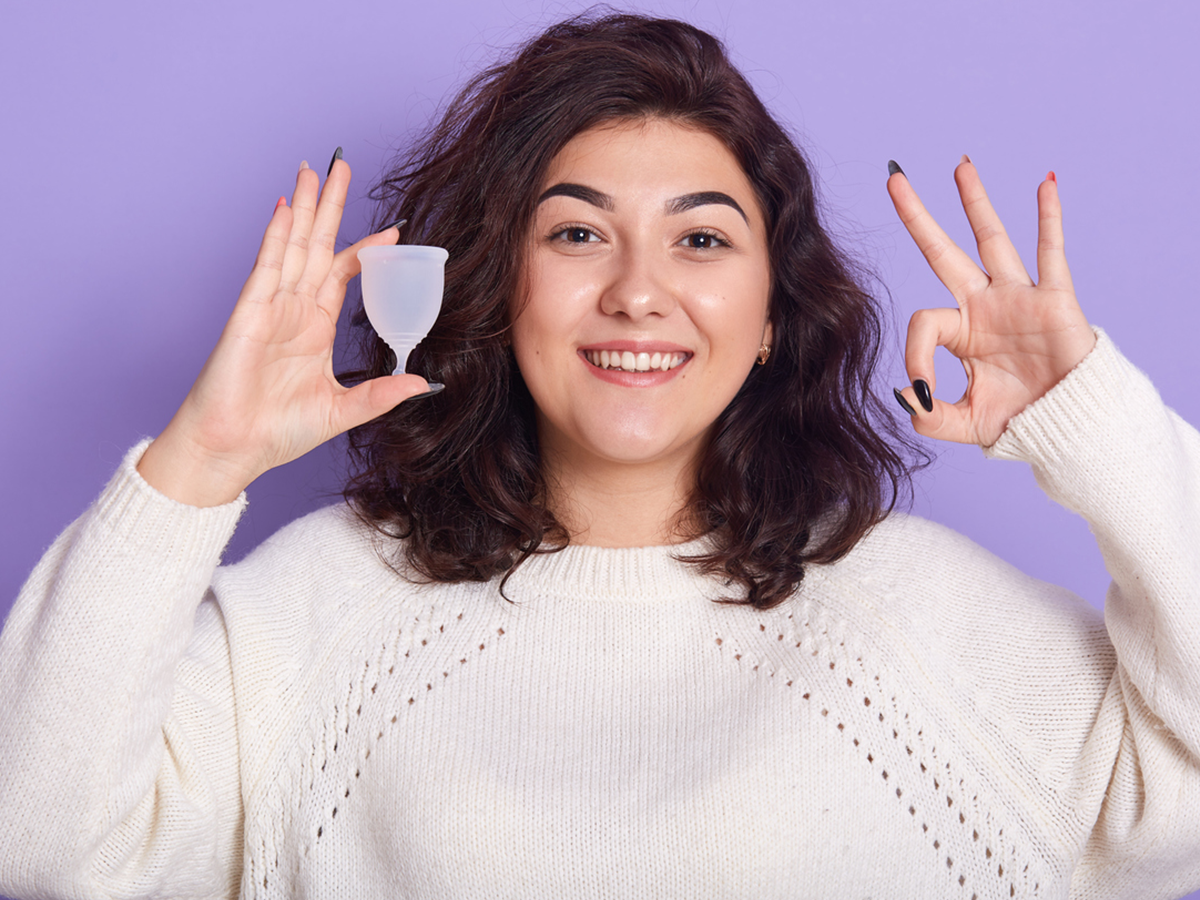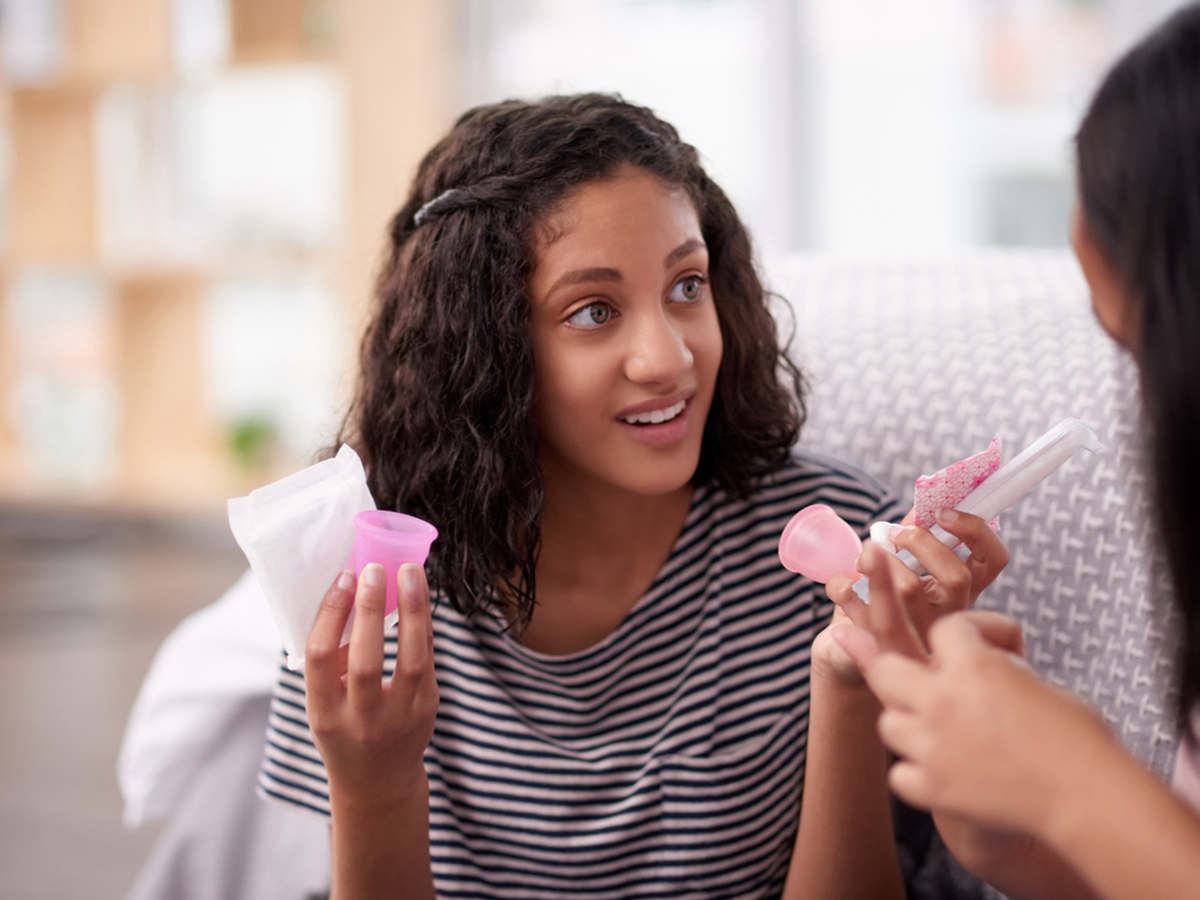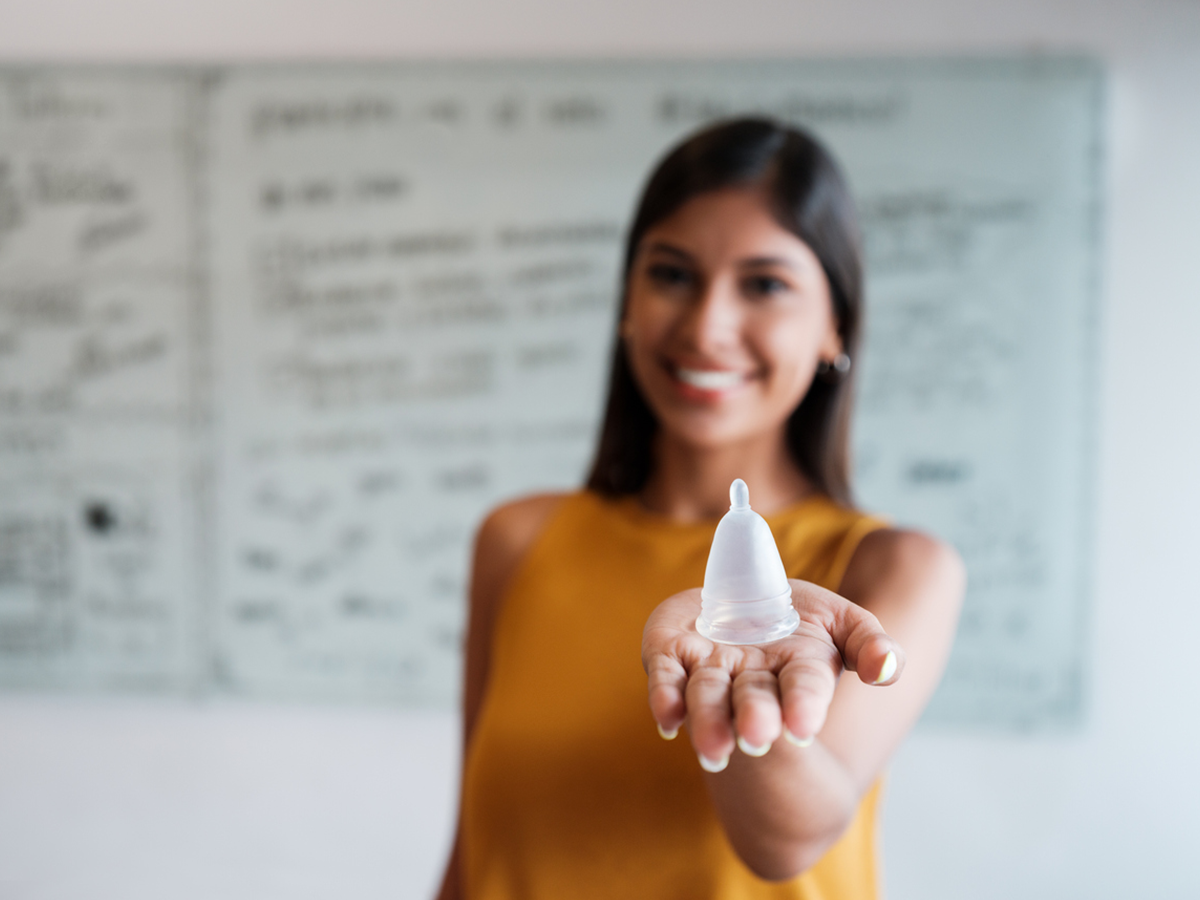Although most women do not start their period journey with them, menstrual cups are one of the most popular forms of menstrual hygiene products.
They are reusable, funnel-shaped cups made of silicone, rubber, or latex that collect period blood. They are inserted into the vagina and sit at the bottom of the cervix, forming a seal to prevent leaks.
How do menstrual cups work?

Credits: Pexels
Menstrual cups are meant to be inserted into the vagina during menstruation to accumulate period blood. They are made of medical-grade silicone, rubber, or latex and come in a variety of sizes and shapes to fit different body types and menstrual flows.
Menstrual cups can be emptied, washed, and reused for up to many years. Hence, they are an eco-friendly as well as an inexpensive option to older methods of menstrual hygiene, such as pads or tampons.
Step-by-step guide on how to use menstrual cups

Credits: iStock
1. Start by cleaning your hands thoroughly with soap and water.
2. Fold the menstrual cup to form a C-shape. To do the C-fold, press the sides of the cup together and then fold it in half. To do the punch-down fold, press one side of the cup down and then fold the opposite side over it.
3. To insert the cup, you can either stand with one leg up, sit on the toilet, or squat.
4. Gently insert the folded cup into your vagina, pointing it slightly toward your tailbone. It should sit just below your cervix, forming a seal against the vaginal walls.
5. Once it’s inserted, use your finger to check that it’s fully open and in position. If you feel any discomfort or pressure, adjust the position of the cup.
6. You can wear the cup for up to 12 hours, depending on your flow. You may need to empty it more frequently on days of heavier flow.
7. To remove the cup, gently pinch the base of the cup to release the seal and then pull it out.
8. Empty the cup into the toilet or sink and wash it thoroughly with warm water. Boiling the cup in water for a few minutes between cycles is also recommended to sterilise it.
9. Once the cup is properly cleaned, reinsert it using the same steps as mentioned above.
It may take some practice to get used to menstrual cups, but once you are familiar, it can be a comfortable, cost-effective, and eco-friendly alternative to traditional menstrual products.
Advantages of menstrual cups
Menstrual cups have several benefits, including cost-effectiveness, comfort, less risk of leaking, amongst others. Here are a few benefits:
Environmental benefits of menstrual cups

Credits: iStock
• Reduced waste: Menstrual cups are reusable and can last for several years with proper care, which decreases the amount of waste generated by disposable menstrual products.
• Less plastic: Disposable menstrual products often contain plastic, which takes years to decompose and harms the environment. Menstrual cups, on the other hand, are typically made of medical-grade silicone, rubber, or latex, which are more eco-friendly.
• Lower carbon footprint: The production and transportation of disposable menstrual products have a considerable carbon footprint. Menstrual cups, however, only need a one-time purchase and can be reused for many years, resulting in a lower carbon footprint.
• Less water usage: The production of disposable menstrual products requires a lot of water, while menstrual cups only require water for cleaning.
Overall, using menstrual cups is a more sustainable and environmentally-friendly option.
Financial benefits of menstrual cups

Credits: iStock
1. Cost-effective: Menstrual cups are a one-time purchase that can last for several years. Compared to disposable menstrual products, which can be expensive because of repeated purchases.
2. No need to buy frequently: Since menstrual cups can last for several years, there is no need for repeat purchases, unlike disposable menstrual products that need to be re-bought every month.
3. Reduced need for backup products: Since menstrual cups can hold more blood than pads or tampons, there is no need for backup products.
Health benefits of menstrual cups

Credits: iStock
1. Reduced risk of toxic shock syndrome (TSS): TSS is a rare health condition, but a bacterial infection can occur if menstrual cups are not used as instructed. Menstrual cups have been found to have a lower risk of TSS compared to tampons, as they do not absorb as much fluid and do not disrupt the natural pH balance of the vagina.
2. Lower risk of irritation: Menstrual cups are made of medical-grade silicone, rubber, or latex, which are non-irritating since they do not contain harmful chemicals or dyes or scents that can irritate the vaginal area.
3. No exposure to harmful chemicals: Disposable menstrual products contain harmful chemicals, such as bleach, dioxins, and pesticides. Menstrual cups, on the other hand, are made of medical-grade materials and are not made with any harmful chemicals.
4. Less drying: Tampons and some pads absorb not only menstrual blood but also vaginal fluids, which can lead to dryness and irritation. Menstrual cups, on the other hand, do not absorb fluids and can actually maintain the natural moisture of the region.
5. Better fit: Menstrual cups come in different sizes and shapes to fit different body types, which can provide a more comfortable and secure fit compared to traditional menstrual products that come in limited sizes.
Concerns & misconceptions about menstrual cups
Safety concerns about menstrual cups

Credits: iStock
While menstrual cups are safe to use and have been used by millions of people around the world for many years, there are a few potential safety concerns to be informed of:
1. Risk of infection: Like any menstrual product, menstrual cups can increase the risk of infection if not properly cleaned. It is key to wash your hands before and after inserting or removing the cup.
2. Difficulty with insertion or removal: For some people, especially beginners, inserting or removing a menstrual cup can be difficult or uncomfortable. It may take some practice to find the best way to insert and remove the cup, and it is important to be gentle to avoid injury or discomfort.
3. Allergic reactions: Some people may be allergic to the materials used to make menstrual cups, such as silicone, rubber, or latex. If you have a known allergy to any of these materials, it is important to choose a cup made from a different material that suits you.
4. Discomfort or pain: In rare cases, menstrual cups may cause discomfort or pain during use. This may be due to an improperly fitting cup, or other medical issues, such as endometriosis or vaginismus. If you experience persistent discomfort or pain while using a menstrual cup, it is important to speak with your healthcare provider.
Common misconceptions about menstrual cups

Credits: Shutterstock
• Menstrual cups are uncomfortable: Some people may assume that menstrual cups are uncomfortable to wear, but in fact, they could be more convenient than traditional menstrual products like pads or tampons. This is because menstrual cups can be customised to fit your body and do not cause the same kind of discomfort or irritation as other products.
• Menstrual cups are difficult to use: While it takes some practice to learn how to insert and remove a menstrual cup, many people find that they become more comfortable with use over time. There are also many resources available online and in-person to help you learn how to use a menstrual cup correctly.
• Menstrual cups are messy: While it’s true that menstrual cups can be messy to empty and clean, many people find that the mess is no worse than what you might experience with traditional products.
• Menstrual cups can get lost inside you: This is a common fear, but it’s not scientifically possible.
• Menstrual cups are only for younger women who have not given birth: In fact, menstrual cups can be used by people of all ages and stages of life. There are also different sizes and shapes available to accommodate different bodies and preferences.
It’s important to remember that everyone’s experience with menstrual cups is different, and what works well for one person may not be the best option for someone else. If you have concerns or questions about menstrual cups, it’s always a good idea to speak with your healthcare provider or a menstrual cup expert to get more clarity.
Social and lead images credits: Columbia Pictures, SPE Films, Hope Productions, KriArj Entertainment, Mrs Funnybones Movies, Shutterstock




